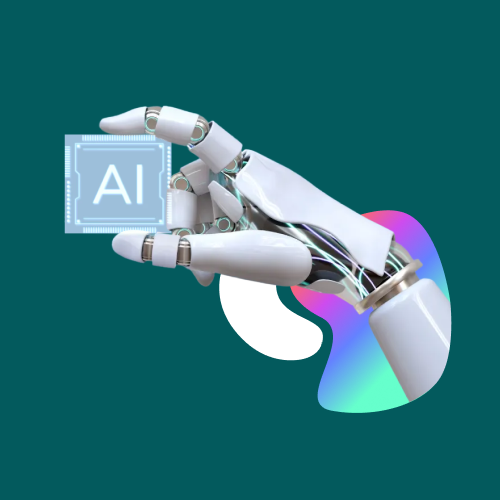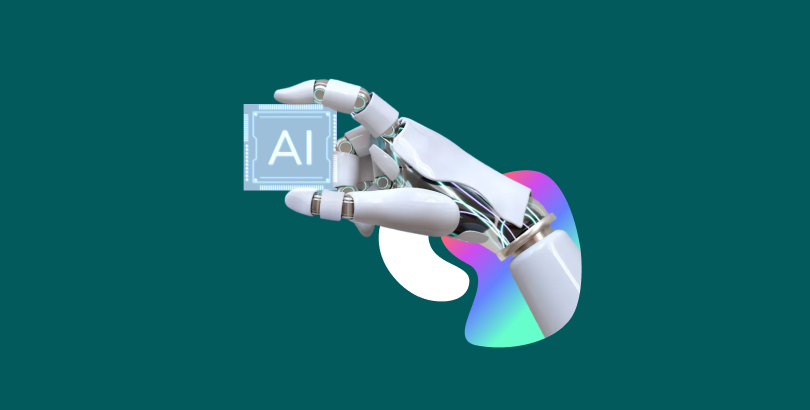
What's the difference between reactive and proactive AI agents?
As artificial intelligence becomes embedded across industries, understanding how AI agents behave is critical to choosing the right solutions for your business. Two core types of AI agents dominate real-world applications: reactive AI agents and proactive AI agents.
This article breaks down the key differences between them, how each type operates, and when to choose one over the other based on your goals. Whether you're automating processes or building customer-facing tools, this guide will help you make informed decisions.
As artificial intelligence becomes embedded across industries, understanding how AI agents behave is critical to choosing the right solutions for your business. Two core types of AI agents dominate real-world applications: reactive AI agents and proactive AI agents.
This article breaks down the key differences between them, how each type operates, and when to choose one over the other based on your goals. Whether you're automating processes or building customer-facing tools, this guide will help you make informed decisions.
What is a reactive AI agent?
A reactive AI agent responds to stimuli in real time. These agents do not rely on memory, planning, or forecasting. Instead, they assess the current environment and take action based on predefined rules or immediate inputs.
Key characteristics:
-
Operates in real-time
-
No memory or long-term strategy
-
Limited to the current input and context
-
Often rule-based or sensor-driven
Common use cases:
-
Industrial automation tools
-
Simple chatbot interactions
-
Robotic sensors in manufacturing
-
Navigation systems for autonomous vehicles
Example of a reactive AI agent
Self-driving car lane detection
A self-driving car’s lane-detection system often acts as a reactive agent. It reads camera input, detects lane markings, and adjusts steering accordingly in real time. It doesn’t store or analyse past behaviour, it simply reacts to what it sees in the moment to keep the vehicle in lane.
What is a proactive AI agent?
A proactive AI agent takes initiative based on historical data, learned patterns, and anticipated outcomes. These agents can forecast future scenarios and make decisions that go beyond the immediate environment.
Key characteristics:
-
Goal-oriented and context-aware
-
Uses memory, predictions, and strategies
-
Learns and adapts over time
-
Capable of complex, multi-step planning
Common use cases:
-
AI-powered customer support that adapts to behaviour
-
Predictive maintenance in manufacturing
-
Personalised healthcare assistants
-
AI agents in procurement or logistics optimisation
Example of a proactive AI agent
AI sales assistant for B2B SaaS
An AI sales assistant integrated into a CRM tool analyses past lead interactions, scores the likelihood to convert, and proactively recommends follow-up actions for the sales team. It does not wait for user commands, it monitors patterns, predicts buying intent, and nudges the team at the right moment to close deals faster.
Reactive vs Proactive AI agents
|
Feature |
Reactive AI agents |
Proactive AI agents |
|
Memory |
No |
Yes |
|
Decision basis |
Real-time input |
Historical data + prediction |
|
Adaptability |
Low |
High |
|
Complexity of tasks |
Simple |
Complex |
|
Goal orientation |
Absent |
Present |
|
Use of learning models |
Minimal or none |
Frequently used |
|
Best fit for |
Static, repetitive environments |
Dynamic, evolving environments |
Why it matters for business strategy
The choice between reactive and proactive AI agents should align with your operational goals and the complexity of the problems you aim to solve.
-
Looking to automate repetitive tasks? A reactive agent may be all you need.
-
Need intelligent decision-making across evolving scenarios? A proactive agent is likely a better fit.
For example, a logistics company may deploy reactive agents for route optimisation in stable environments, while using proactive agents to forecast demand spikes and adjust supply chains accordingly.
How Geeks helps you navigate AI agent development
At Geeks, we don’t jump straight into development. We start by helping you uncover the right AI opportunities through our AI Opportunity Discovery process. This means identifying pain points, analysing existing workflows, and pinpointing where automation or intelligence can unlock the most value.
From there, our AI Agent Development services turn insights into working solutions. We design and engineer custom AI agents, reactive or proactive, based on your specific goals, systems, and data. Whether you need a fast-turnaround prototype or a scalable AI agent for enterprise-wide deployment, our team delivers with precision and clarity.
We’ve supported organisations across finance, logistics, construction, education, and more to design smarter systems, automate decision-making, and scale operations. Every project is guided by a clear success metric, ensuring your AI agents deliver measurable business impact from day one.
Final thoughts
Reactive and proactive AI agents serve distinct purposes. One reacts. The other anticipates. Understanding their differences allows you to choose the right path for automation, customer experience, and innovation.
Want help deciding which AI agent model suits your needs best?
FAQs
What are AI agents, and how do they work?
AI agents are software entities that perceive their environment, process data, and take actions to achieve specific goals. They can range from simple rule-based systems to advanced intelligent agents powered by machine learning. Depending on their design, AI agents can operate reactively, responding only to current stimuli or proactively, anticipating future scenarios based on past data. Businesses use AI agents to streamline operations, automate workflows, and improve customer experience.
What is the difference between reactive and proactive AI agents?
The primary difference lies in how they make decisions. Reactive AI agents respond instantly to current inputs without relying on memory or historical data. They are ideal for real-time tasks like object detection or rule-based automation. Proactive AI agents, on the other hand, anticipate future events using historical trends, context, and learned patterns. They are designed to initiate actions, make recommendations, and drive strategic decisions without needing user prompts.
Which industries benefit from reactive AI agent development?
Reactive AI agents are widely used in industries where predictable, repetitive actions are needed. These include:
-
Manufacturing: For robotic assembly lines or equipment monitoring
-
Retail: For real-time price adjustment or in-store analytics
-
Logistics: For real-time tracking and route correction
Their simplicity makes them reliable, fast, and cost-effective in controlled environments.
What are real-world applications of proactive AI agents?
Proactive AI agents are used where decision-making depends on context and prediction. For example:
-
Sales and marketing automation: AI agents predict customer behaviour and send targeted recommendations
-
Predictive maintenance: In manufacturing, agents forecast when machines need service
-
Healthcare: AI agents recommend treatment paths based on patient history
-
Smart assistants: Systems like AI schedulers or proactive chatbots anticipate user needs without prompts
These agents help businesses stay ahead by acting before problems or opportunities arise.
How do proactive AI agents learn over time?
Proactive AI agents typically rely on machine learning models that are trained on historical data. As they gather more information, they continuously refine their predictions and decision-making logic. These agents use techniques such as supervised learning, reinforcement learning, or natural language processing to detect patterns, assess risk, and suggest optimal outcomes. Their value grows over time as their accuracy improves with more data and experience.
Can a single AI agent be both reactive and proactive?
Yes. Many advanced AI systems combine reactive and proactive capabilities. For instance, an AI-powered customer service assistant may react to user queries (reactive) while also sending follow-up messages or suggesting solutions based on user history (proactive). These hybrid agents provide flexibility and better user experiences by balancing responsiveness with foresight.
What is involved in developing a custom AI agent for my business?
Custom AI agent development involves:
-
Identifying high-impact use cases
-
Gathering relevant data
-
Designing the AI model (rule-based or learning-based)
-
Training and testing the agent in a simulated or real environment
-
Iterating based on results
-
Deploying and monitoring its performance
At Geeks, our AI Agent Development helps you explore and prototype these solutions rapidly, often within weeks, before committing to full-scale deployment.
Are proactive AI agents more expensive to build than reactive ones?
Generally, yes. Proactive AI agents require more advanced architecture, access to large datasets, ongoing learning mechanisms, and greater development effort. However, they often deliver stronger ROI through automation, reduced operational costs, and improved decision-making. At Geeks, we recommend running lean experiments first to assess feasibility and impact before scaling up.
How can Geeks support my AI agent development journey?
Geeks is a trusted AI agent development partner for businesses across the UK and the US. Through our AI Agent Development, we help you test automation ideas fast, without long-term commitment. Whether you're starting with reactive automation or building a scalable proactive AI ecosystem, we provide strategy, design, and engineering support at every stage.
Book a free discovery session to explore where AI agents can deliver the most value in your business.










